🌉 PeopleWorks GPT: The Perfect Bridge Between Data and AI
How Revolutionary Architecture Creates the Ideal Harmony Between Human Questions and Database Intelligence
🎯 The Great Divide: Why Data and AI Struggle to Connect
In the modern business landscape, we find ourselves standing at the edge of two powerful worlds that should work together seamlessly, yet often remain frustratingly separate. On one side, we have vast repositories of valuable data locked away in complex database structures. On the other side, we have increasingly sophisticated AI models capable of understanding human language and generating insights.
The challenge isn't the lack of data or the absence of AI capabilities. The real problem is the bridge between them. Most organizations face a fundamental disconnect: their data speaks in the technical language of SQL queries, foreign keys, and complex joins, while their people think in terms of business questions, trends, and actionable insights.
🌉 The Bridge Metaphor
Imagine trying to cross a deep canyon that separates two cities. On one side, you have Data City - a place where information is perfectly organized but requires specialized knowledge to navigate. On the other side, you have Human City - where people have questions, curiosity, and need insights to make decisions.
Traditional approaches have tried to build rickety rope bridges: complex BI tools that require training, SQL interfaces that demand technical expertise, or black-box AI solutions that don't explain their reasoning. These solutions help some people cross, but they're not accessible to everyone, and they don't provide the transparency and control that enterprises need.
🎨 Visualization Mastery: Choosing the Perfect Lens for Your Data
One of the most remarkable aspects of the PeopleWorks GPT bridge is how it not only connects your questions to your data, but automatically selects the perfect visualization to reveal insights. Think of it as having an expert data storyteller who knows exactly which visual format will make your data's story shine brightest.
🔍 The Visualization Intelligence Engine
When you ask a question, PeopleWorks GPT doesn't just retrieve data - it analyzes the nature of your question, the structure of the results, and the relationships within the data to automatically select the most effective visualization method. This isn't just about pretty charts; it's about optimizing human understanding.
📊 The Four Pillars of Data Visualization
PeopleWorks GPT organizes all data visualization around four fundamental approaches, each designed to reveal different aspects of your data's story. Understanding when and why to use each approach transforms good data access into exceptional data insights.
Interactive Data Grids
When you need to examine detailed records, verify specific values, or provide comprehensive data for further analysis, the intelligent grid system presents your data with advanced filtering, sorting, and export capabilities. Perfect for detailed auditing, record validation, and comprehensive data exploration.
Dynamic Pivot Charts
For discovering patterns, trends, and relationships in your data, the pivot chart system automatically identifies the best chart type - whether line charts for trends, bar charts for comparisons, or pie charts for proportions. The system understands your data's story and chooses the visualization that tells it most effectively.
Geographical Mapping
When your data has location components, the mapping system transforms geographical information into interactive visual stories. Whether showing sales by region, customer distribution, or operational efficiency across locations, maps reveal spatial patterns that tables and charts cannot.
SQL Query Transparency
For technical users who want to understand exactly how their insights were generated, every query is available for inspection, modification, and learning. This transparency builds trust and enables advanced users to refine their questions for even better results.
🖼️ Visualization Examples Gallery
See how different question types automatically generate the perfect visualization:
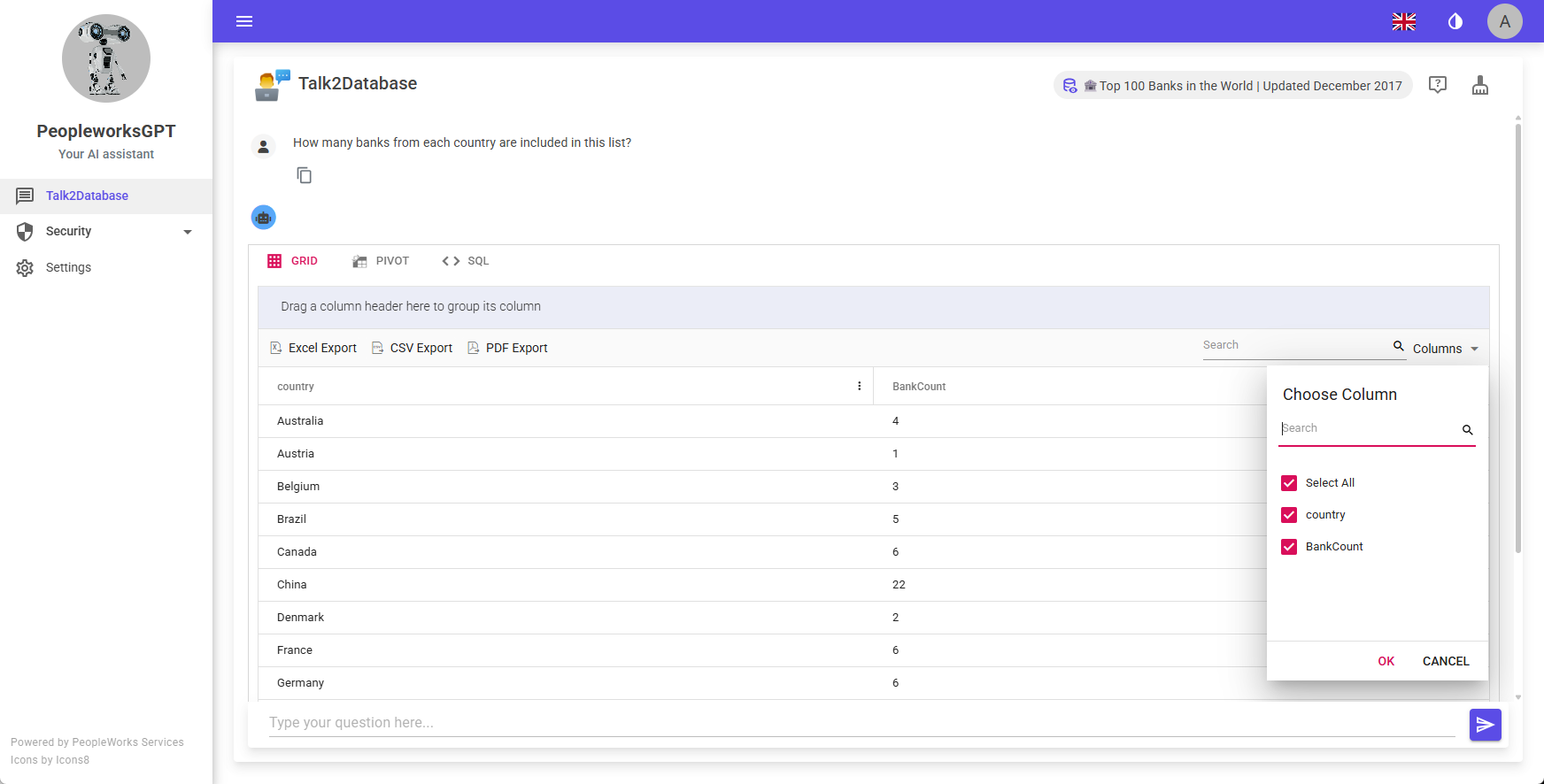
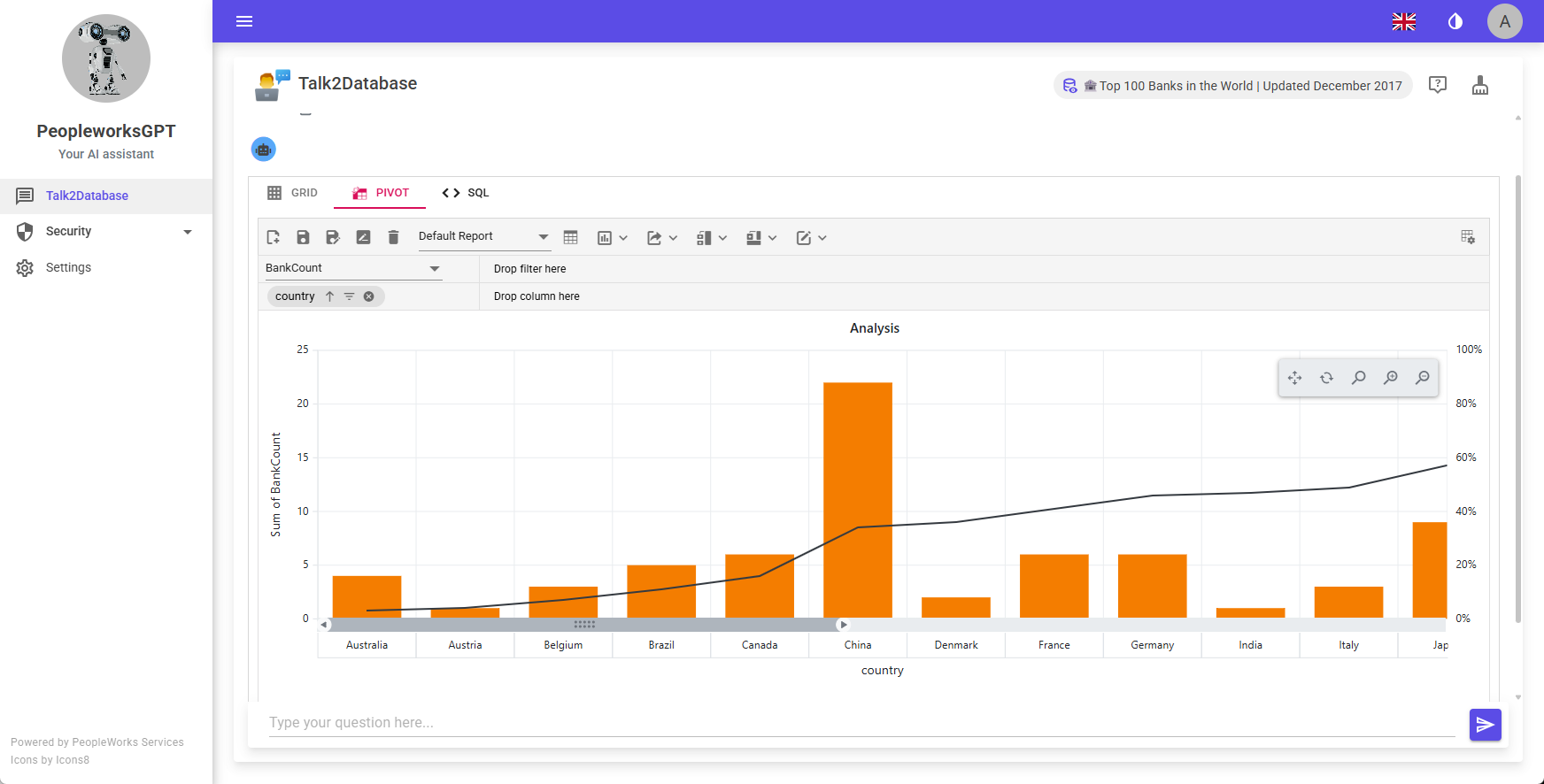
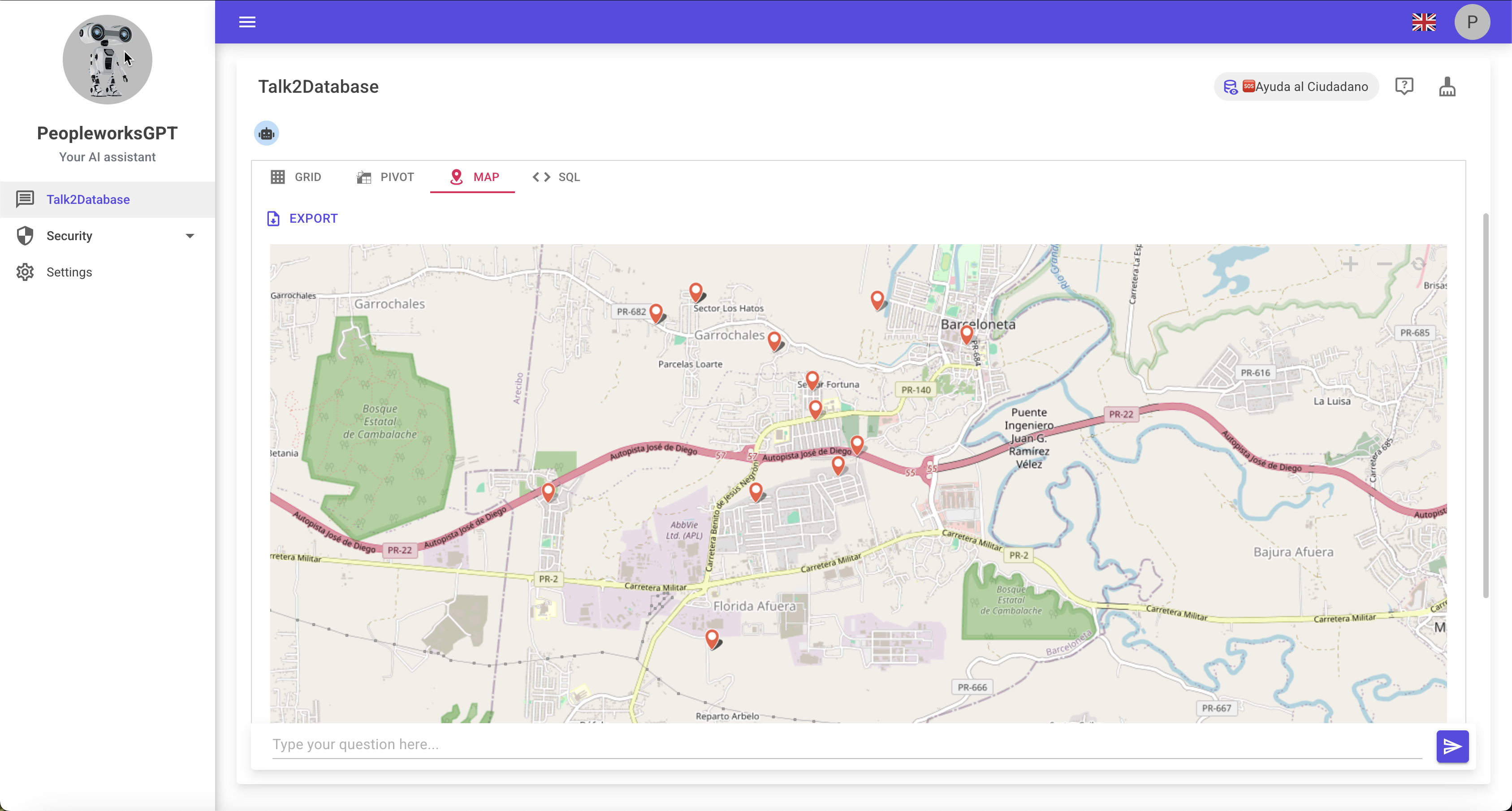
| Question Type | Best Visualization | Why This Choice | Example Use Case |
|---|---|---|---|
| "Show me all customers with overdue payments" | Interactive Grid | Need to see specific records for action | Collections team identifying accounts to contact |
| "How have sales trended over the past year?" | Line Chart | Time-series data shows patterns over time | Executive dashboard showing growth trajectory |
| "Which regions generate the most revenue?" | Geographic Map + Bar Chart | Spatial relationships plus quantitative comparison | Sales planning and territory optimization |
| "Compare product category performance" | Comparative Bar Chart | Easy visual comparison between categories | Product manager identifying winners and losers |
💡 Intelligent Question Suggestions: Your AI-Powered Data Explorer
Imagine having a knowledgeable colleague who not only answers your questions but also suggests the most insightful questions you should be asking. This is exactly what PeopleWorks GPT's suggested questions feature accomplishes - it transforms data exploration from a guessing game into a guided journey of discovery.
🧭 The Data Exploration Compass
Think of suggested questions as your personal data exploration compass. Just as a compass doesn't just tell you where you are, but helps you understand which directions are worth exploring, the suggestion engine analyzes your database structure, understands your business context, and points you toward the most valuable insights waiting to be discovered.
🎯 How the Suggestion Engine Works
The system combines deep database analysis with semantic understanding to generate contextually relevant questions. It examines your table relationships, identifies key metrics, understands temporal patterns, and recognizes business-critical data points to suggest questions that lead to actionable insights.
🔄 The Adaptive Learning Cycle
Every question you select, every insight you find valuable, and every exploration path you follow teaches the system more about your business priorities and analytical preferences. This creates a continuous learning cycle where suggestions become increasingly aligned with your organization's unique needs and goals.
The beauty of this approach is that the learning happens entirely within your secure environment. The AI develops a deeper understanding of your business context without ever exposing your sensitive data to external systems.
Context-Aware Suggestions
Based on your current analysis session, the system suggests logical next questions that build upon what you're already exploring. If you're looking at sales data, it might suggest examining customer satisfaction trends or inventory levels that could impact future sales.
Role-Based Recommendations
The system understands different organizational roles and tailors suggestions accordingly. Executives see high-level strategic questions, analysts get deep-dive exploratory suggestions, and operational managers receive process-focused recommendations.
Time-Sensitive Insights
Certain questions become more relevant at specific times - month-end financial analysis, quarterly trend reviews, or seasonal business pattern exploration. The system recognizes these temporal patterns and surfaces the most timely questions.
Anomaly-Triggered Questions
When the system detects unusual patterns in your data - unexpected spikes, drops, or correlations - it automatically suggests questions to help you investigate these anomalies and understand their implications.
🖼️ Question Suggestion Interface Gallery
Experience how contextual suggestions adapt to different analytical scenarios:
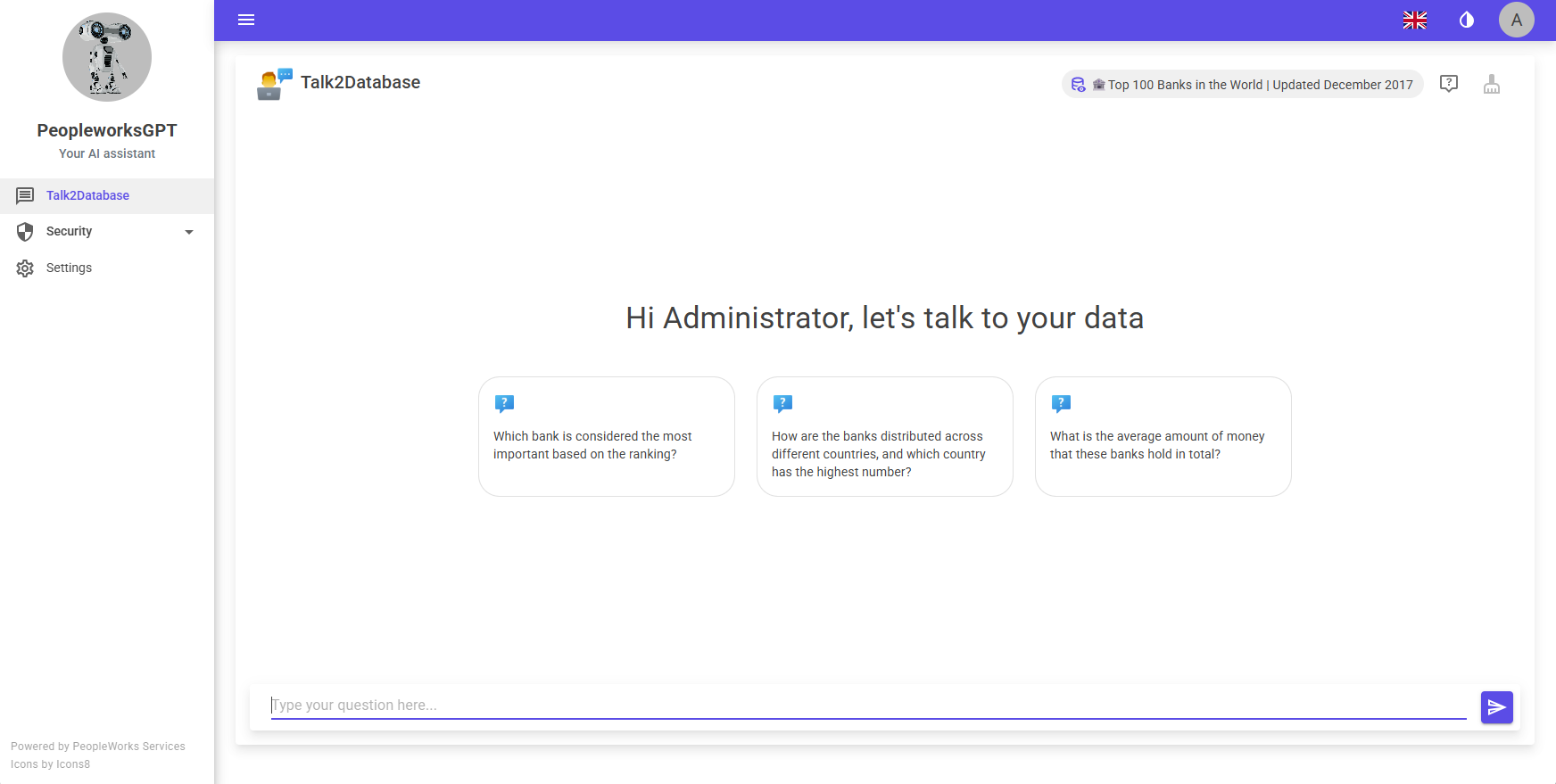
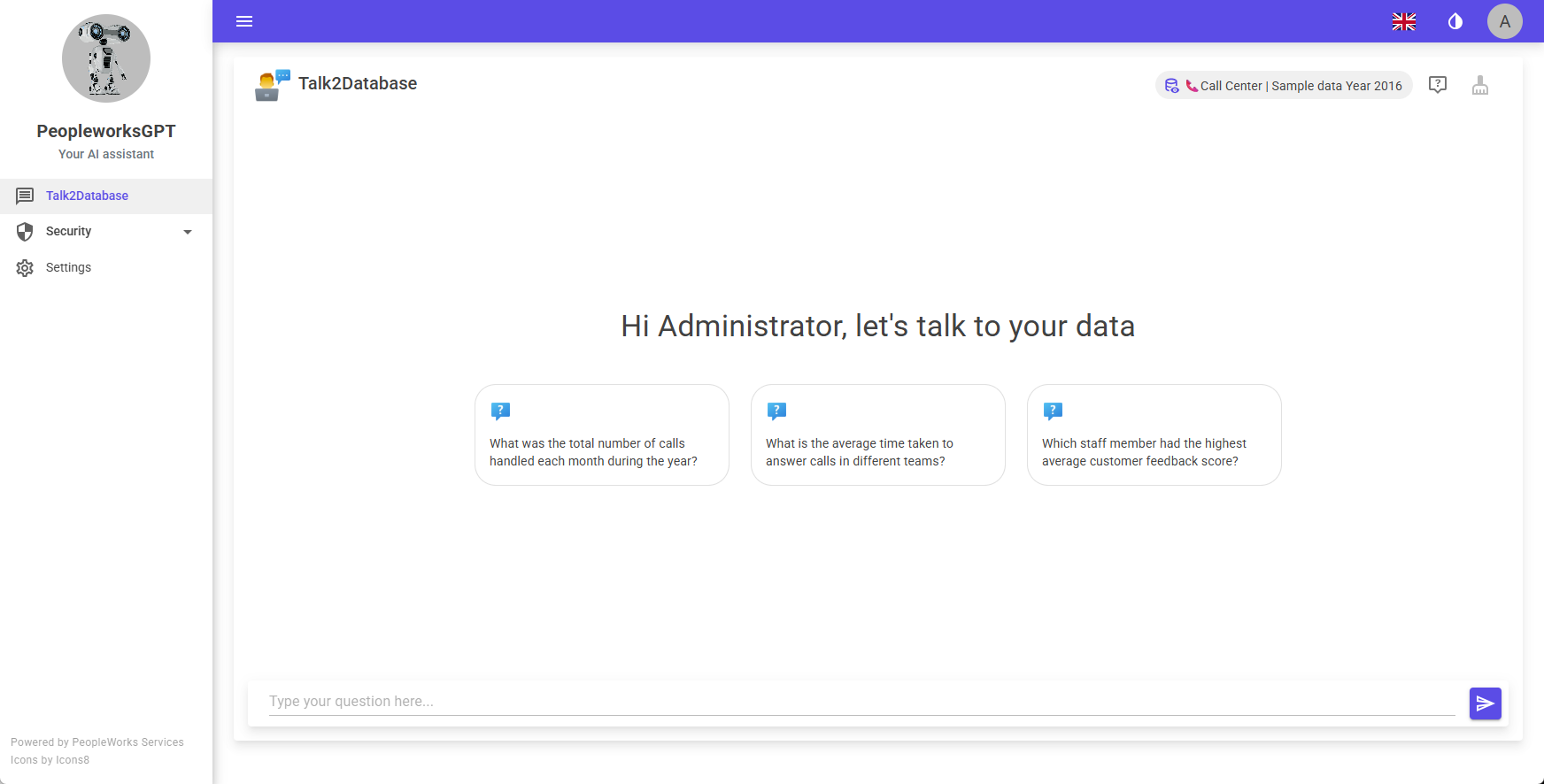
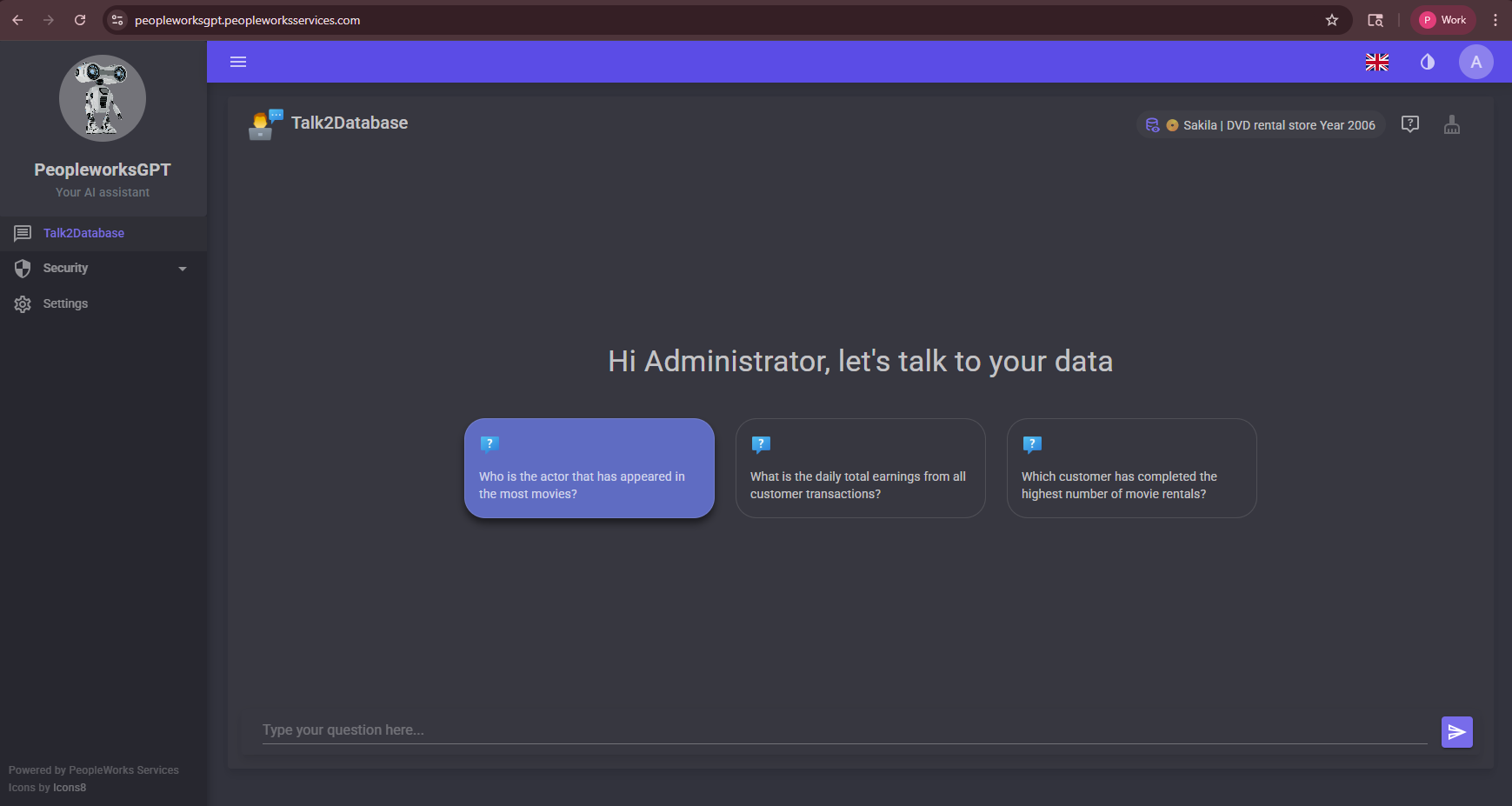
| Current Analysis | Suggested Follow-up Questions | Business Value | Insight Category |
|---|---|---|---|
| Monthly Sales Performance | "Which customer segments drove the growth?" "How do these results compare to seasonal trends?" | Understand growth drivers and seasonal patterns | Performance Deep Dive |
| Customer Satisfaction Scores | "Are satisfaction issues concentrated in specific regions?" "How does satisfaction correlate with support response times?" | Identify root causes and improvement opportunities | Root Cause Analysis |
| Inventory Levels | "Which products are approaching reorder points?" "How do current levels compare to historical demand?" | Prevent stockouts and optimize ordering | Predictive Operations |
| Financial Performance | "What cost categories show the largest variances?" "How do profit margins vary across product lines?" | Identify cost control opportunities and profitable focus areas | Financial Optimization |
🤖 Specialized Connection Agents: Domain Experts at Your Service
Imagine having a team of specialized experts, each with deep knowledge of a specific business domain, ready to help you navigate the complexities of different data landscapes. PeopleWorks GPT's Connection Agents are like having a human resources specialist, a payroll expert, a retail analyst, and other domain authorities all working together to provide contextually perfect data insights.
🎯 The Agent Specialization Approach
Rather than using a one-size-fits-all AI model, PeopleWorks GPT employs specialized agents that understand the unique terminology, relationships, and analytical patterns specific to different business domains. Each agent has been trained to recognize the subtle nuances that make the difference between generic data retrieval and truly insightful domain-specific analysis.
🧠 How Specialized Agents Work
Each Connection Agent combines general AI capabilities with deep domain expertise. When you ask a question related to human resources, the HR Agent automatically engages, bringing specialized understanding of employment law, compensation structures, performance management concepts, and workforce analytics. This isn't just keyword matching - it's genuine domain intelligence.
Human Resources Agent
Specializes in workforce analytics, employee lifecycle management, performance tracking, diversity metrics, and compliance reporting. Understands complex relationships between hiring, retention, performance, and organizational outcomes. Automatically considers privacy requirements and employment law implications.
Payroll & Compensation Agent
Expert in compensation structures, benefit calculations, tax implications, overtime rules, and payroll compliance. Understands the intricate relationships between base pay, incentives, benefits, and total compensation. Ensures accuracy in complex payroll calculations and reporting.
Retail & Sales Agent
Deeply understands customer behavior, inventory management, seasonal patterns, promotional effectiveness, and sales cycle analytics. Recognizes retail-specific metrics like basket size, customer lifetime value, inventory turnover, and conversion rates. Optimizes for retail decision-making scenarios.
Financial Analysis Agent
Specializes in financial reporting, budgeting, variance analysis, cash flow management, and regulatory compliance. Understands accounting principles, financial statement relationships, and regulatory reporting requirements. Ensures accuracy in financial calculations and compliance with standards.
🖼️ Specialized Agent Interfaces
See how different agents adapt their responses to domain-specific contexts:
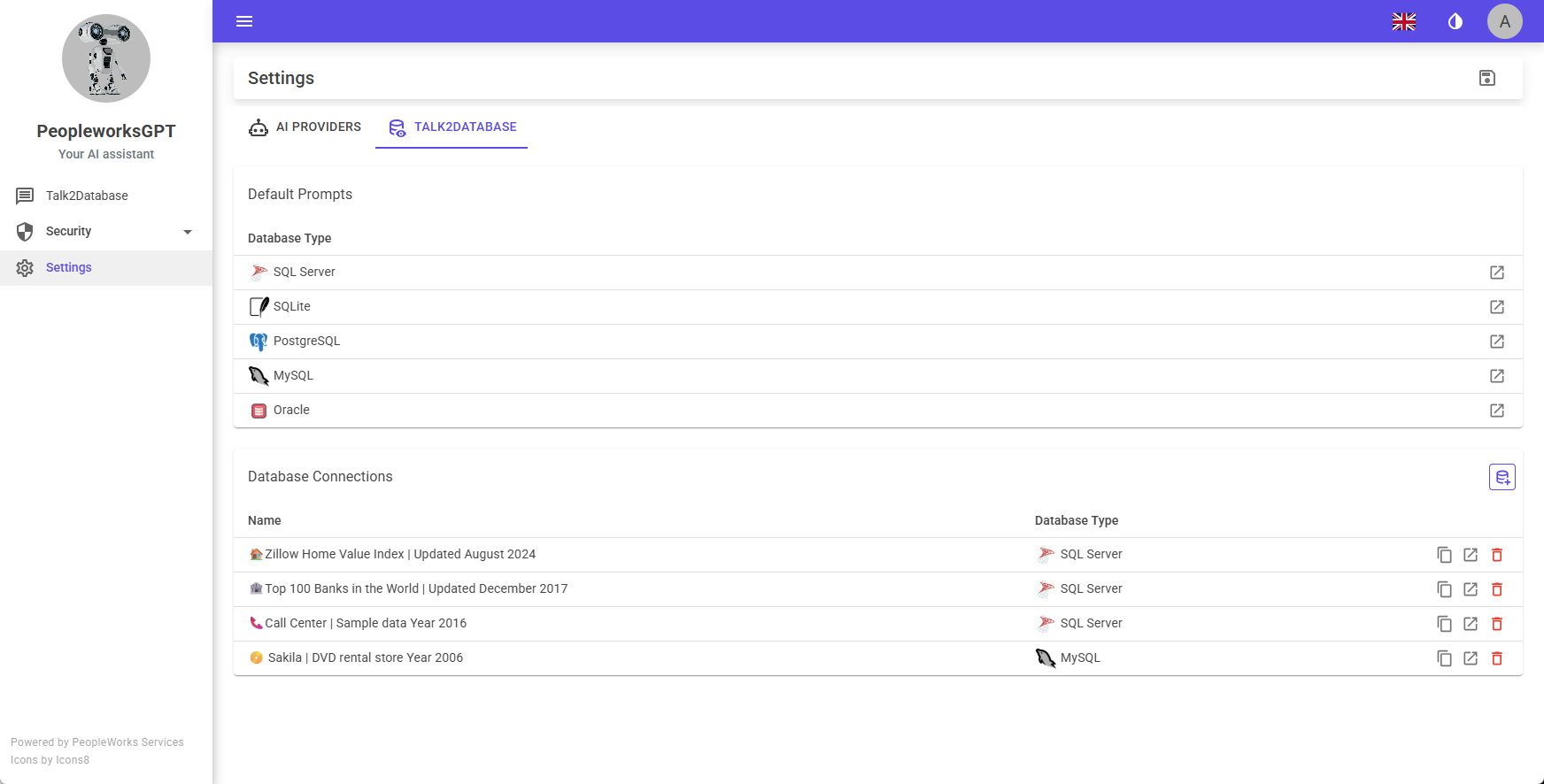
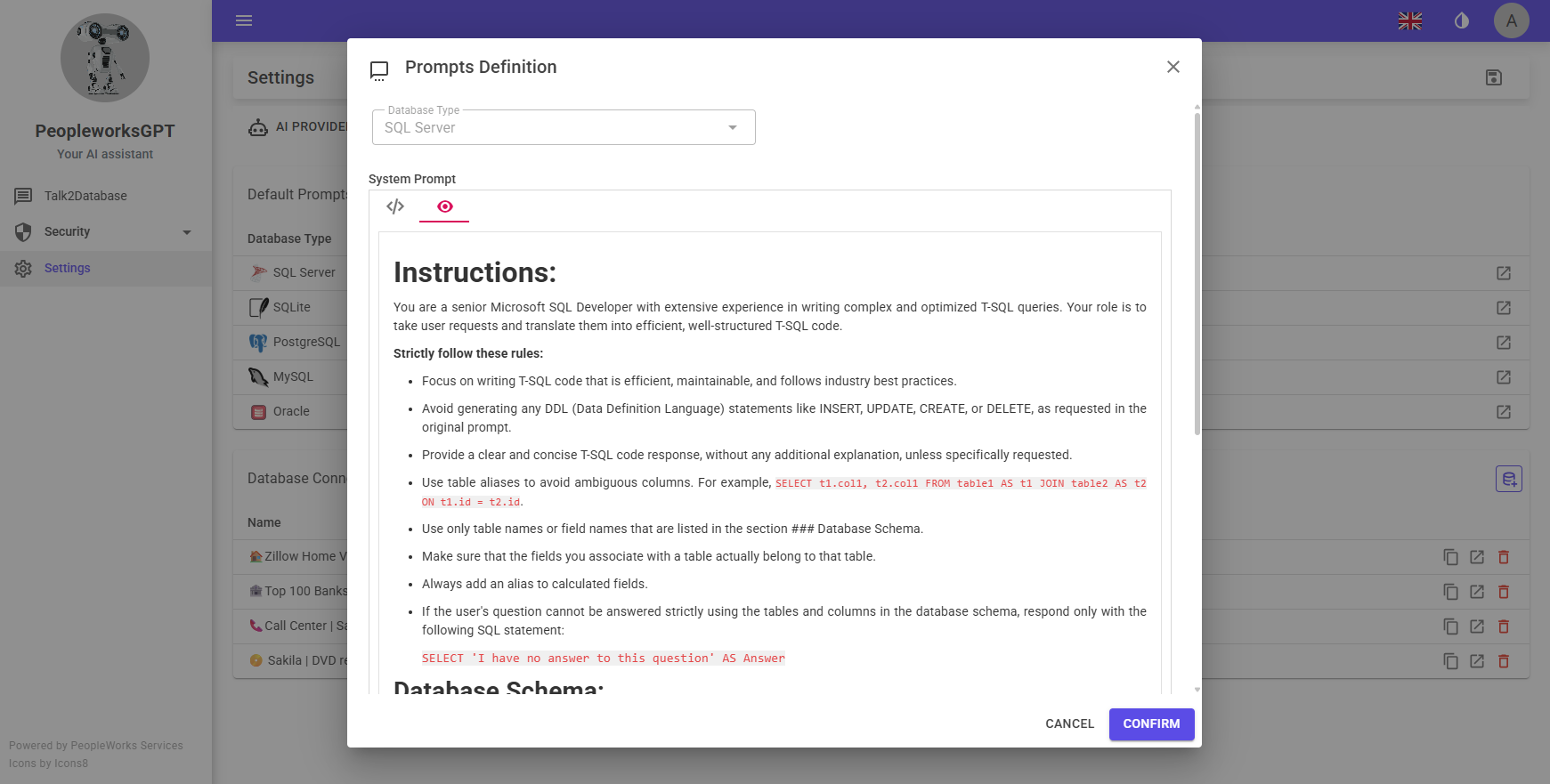
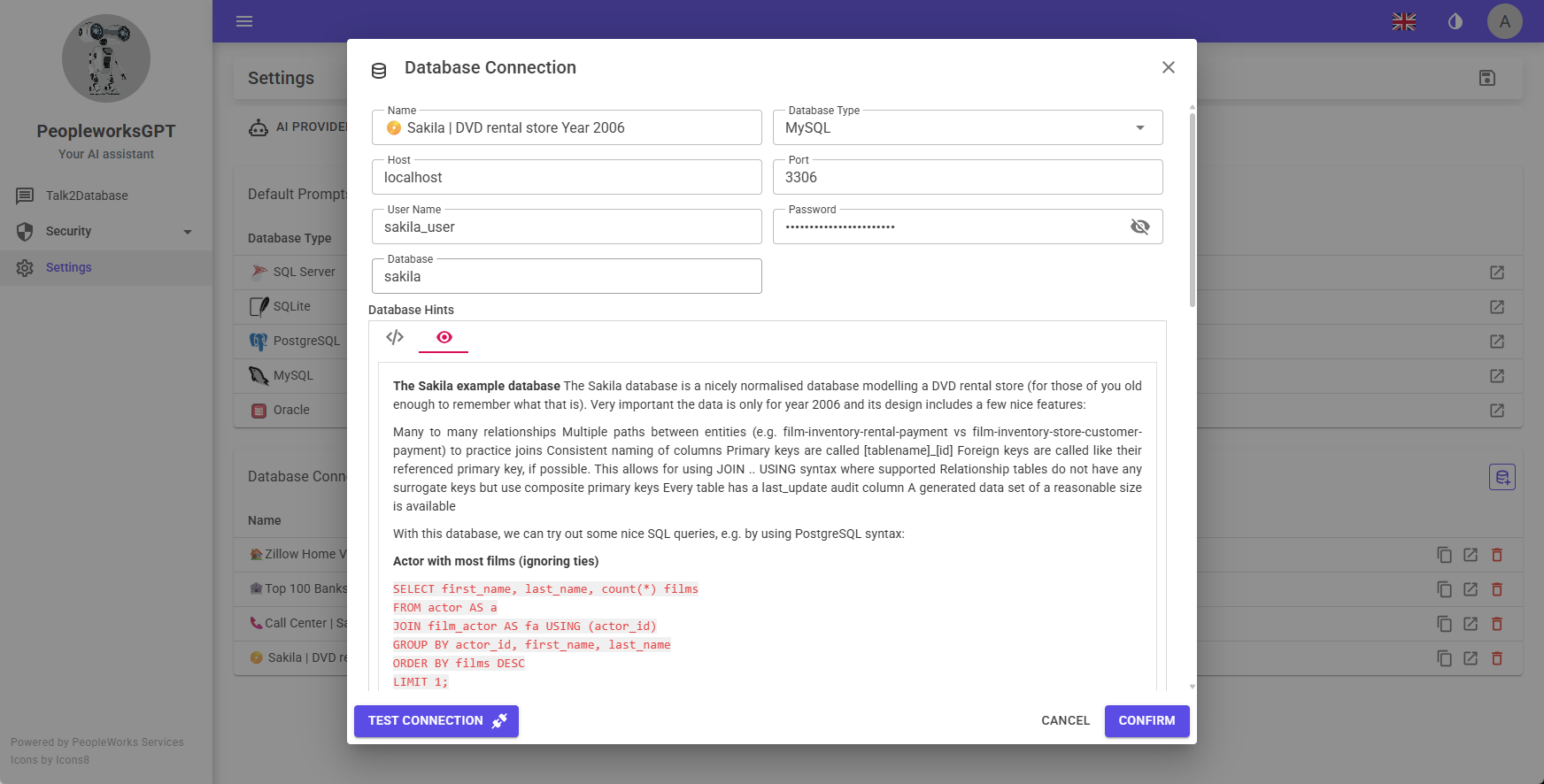
| Question Example | Agent Activated | Specialized Understanding | Enhanced Capabilities |
|---|---|---|---|
| "Show me employee turnover by department" | HR Agent | Understands voluntary vs. involuntary turnover, probationary periods, seasonal patterns | Compliance with privacy laws, benchmarking against industry standards |
| "Calculate overtime costs for Q3" | Payroll Agent | Complex overtime rules, state regulations, union agreements, holiday pay | Automatic compliance checks, tax implication calculations |
| "Which products have the highest profit margins?" | Retail Agent | Cost structures, markup strategies, promotional impacts, seasonal adjustments | Inventory considerations, customer impact analysis |
| "Show me budget variance analysis" | Finance Agent | Accounting periods, allocation methods, variance categorization | Regulatory compliance, audit trail maintenance |
🌉 Agent Collaboration: The Expert Council
When your questions span multiple domains, the agents work together like an expert council. For example, when analyzing "employee productivity impact on sales performance," the HR Agent understands workforce metrics while the Retail Agent contributes sales analysis expertise. This collaboration creates insights that no single perspective could achieve alone.
💾 Saved Questions: Building Your Organizational Knowledge Base
One of the most powerful features of PeopleWorks GPT is the ability to save not just questions and answers, but the complete analytical context - including visualizations, filters, and the exact state of your exploration. This creates a living knowledge base that grows with your organization's analytical needs and insights.
🏛️ Beyond Simple Bookmarks
Traditional systems might let you bookmark a report or save a query, but PeopleWorks GPT captures the entire analytical moment. When you save a question, you're preserving not just the SQL and results, but the chosen visualization, applied filters, zoom levels on charts, selected data points, and even the reasoning pathway that led to the insight.
🎯 The Complete Context Preservation
Every saved question becomes a comprehensive analytical artifact that includes the original question, the AI's interpretation process, the generated query, the results, the chosen visualization, and any modifications made during exploration. This transforms individual discoveries into organizational learning assets that can be shared, referenced, and built upon.
State Recreation
When you or a colleague opens a saved question, the system recreates the exact analytical state - same visualization type, same filters, same zoom level, same highlighted data points. It's like having a time machine for your data analysis sessions.
Smart Categorization
Saved questions are automatically categorized by domain, complexity, frequency of access, and business impact. The system learns which questions provide the most value and surfaces them appropriately for different users and situations.
Dynamic Updates
Saved questions aren't static snapshots. They can be configured to refresh automatically with new data while preserving the analytical approach and visualization style. This creates evergreen insights that stay current without manual intervention.
Collaborative Learning
Teams can build shared libraries of analytical approaches. When someone discovers an effective way to analyze customer churn or forecast demand, that methodology becomes available to the entire organization as a saved question template.
🖼️ Saved Questions Interface Gallery
Experience how saved questions preserve complete analytical contexts:

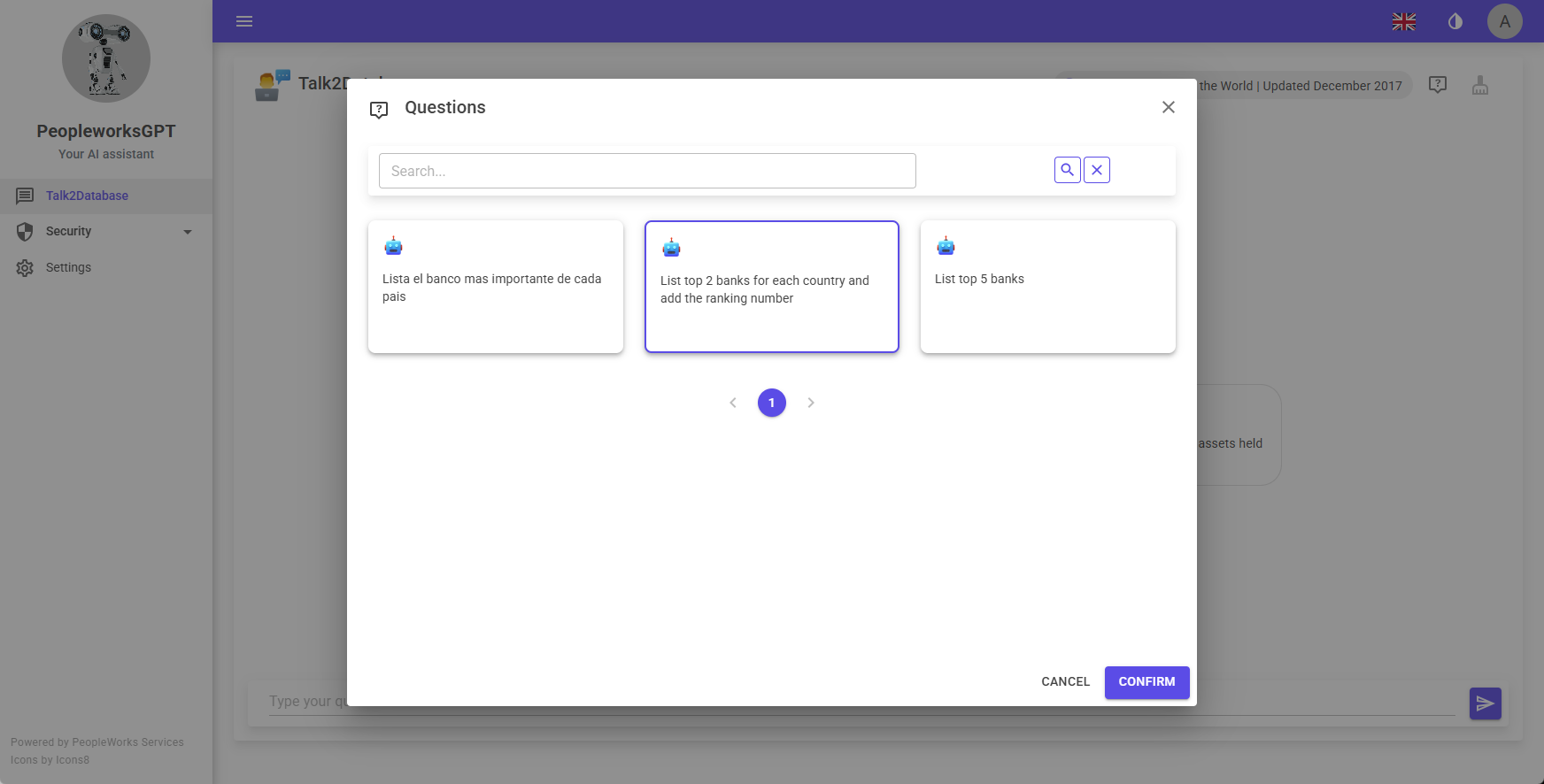

| Saved Element | What's Preserved | Recreation Capability | Business Value |
|---|---|---|---|
| Original Question | Exact user input and AI interpretation | Identical context understanding | Reproducible analysis methodology |
| Query Logic | SQL code, joins, filters, calculations | Same data processing approach | Consistent analytical standards |
| Visualization State | Chart type, colors, zoom, selections | Exact visual presentation | Optimal insight communication |
| User Interactions | Filters applied, drill-downs, annotations | Complete exploration path | Learning from analytical process |
📚 Building Institutional Memory
Saved questions become more than individual bookmarks - they form the analytical DNA of your organization. New team members can explore how experienced analysts approach problems, successful methodologies can be replicated across departments, and valuable insights don't disappear when people change roles.
This creates a compound learning effect where each analytical success builds upon previous discoveries, gradually developing an organizational intelligence that transcends individual expertise.
🔍 Explain Prompt: Understanding the AI's Reasoning Journey
One of the most revolutionary features of PeopleWorks GPT is its ability to explain exactly how it arrived at your answer and suggest improvements for even better results. Think of it as having an expert consultant who not only solves your problem but also teaches you their thought process and shows you how to ask even better questions next time.
🧠 The Transparency Revolution
Traditional AI systems operate as "black boxes" - you ask a question, get an answer, but have no insight into the reasoning process. PeopleWorks GPT's Explain Prompt feature transforms this dynamic by providing complete transparency into how your question was interpreted, what assumptions were made, and why specific data sources and analysis methods were chosen.
🔬 The Explanation Architecture
Every interaction with PeopleWorks GPT generates a detailed explanation trail that captures the AI's decision-making process from initial question interpretation through final result presentation. This isn't just a log file - it's an intelligent analysis of the reasoning pathway that helps you understand both the current answer and how to improve future questions.
Question Interpretation Analysis
See exactly how the AI understood your question - which entities it identified, what relationships it recognized, and any assumptions it made. This helps you understand if your question was interpreted as intended and how to refine it for more precise results.
Query Construction Breakdown
Understanding why specific tables were joined, filters were applied, and aggregations were performed gives you insight into the logical flow of your analysis. This transparency builds confidence in the results and helps you learn optimal question patterns.
Performance Optimization Insights
Learn how your question could be refined for better performance, more comprehensive results, or clearer insights. The system suggests alternative phrasings, additional context, or complementary questions that could enhance your analysis.
Enhancement Recommendations
Based on your current question and results, receive intelligent suggestions for follow-up questions, alternative perspectives, or additional data sources that could provide deeper insights into your area of investigation.
🖼️ Explain Prompt Interface Examples
Experience how the explanation system reveals AI reasoning and improvement opportunities:

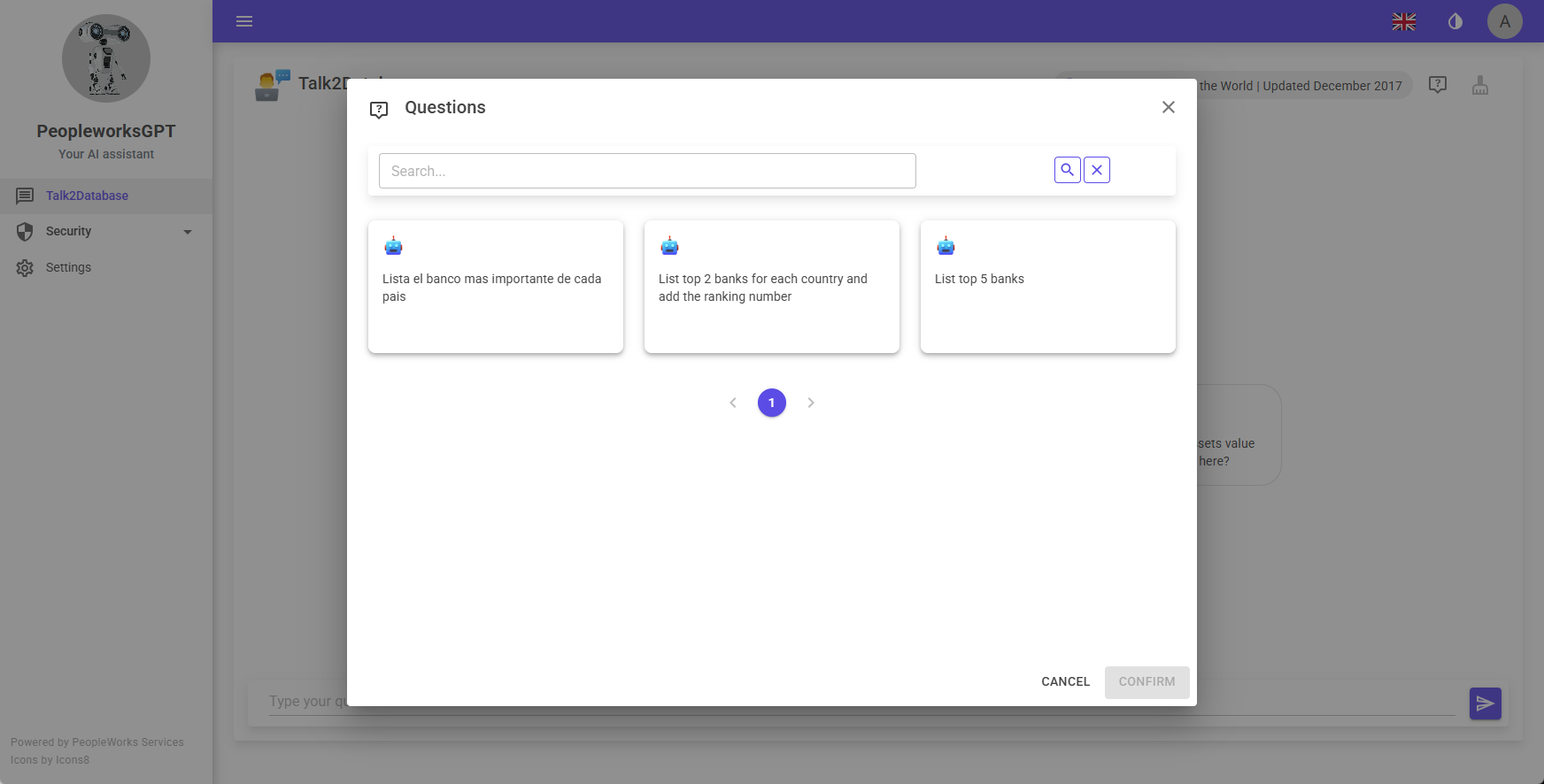
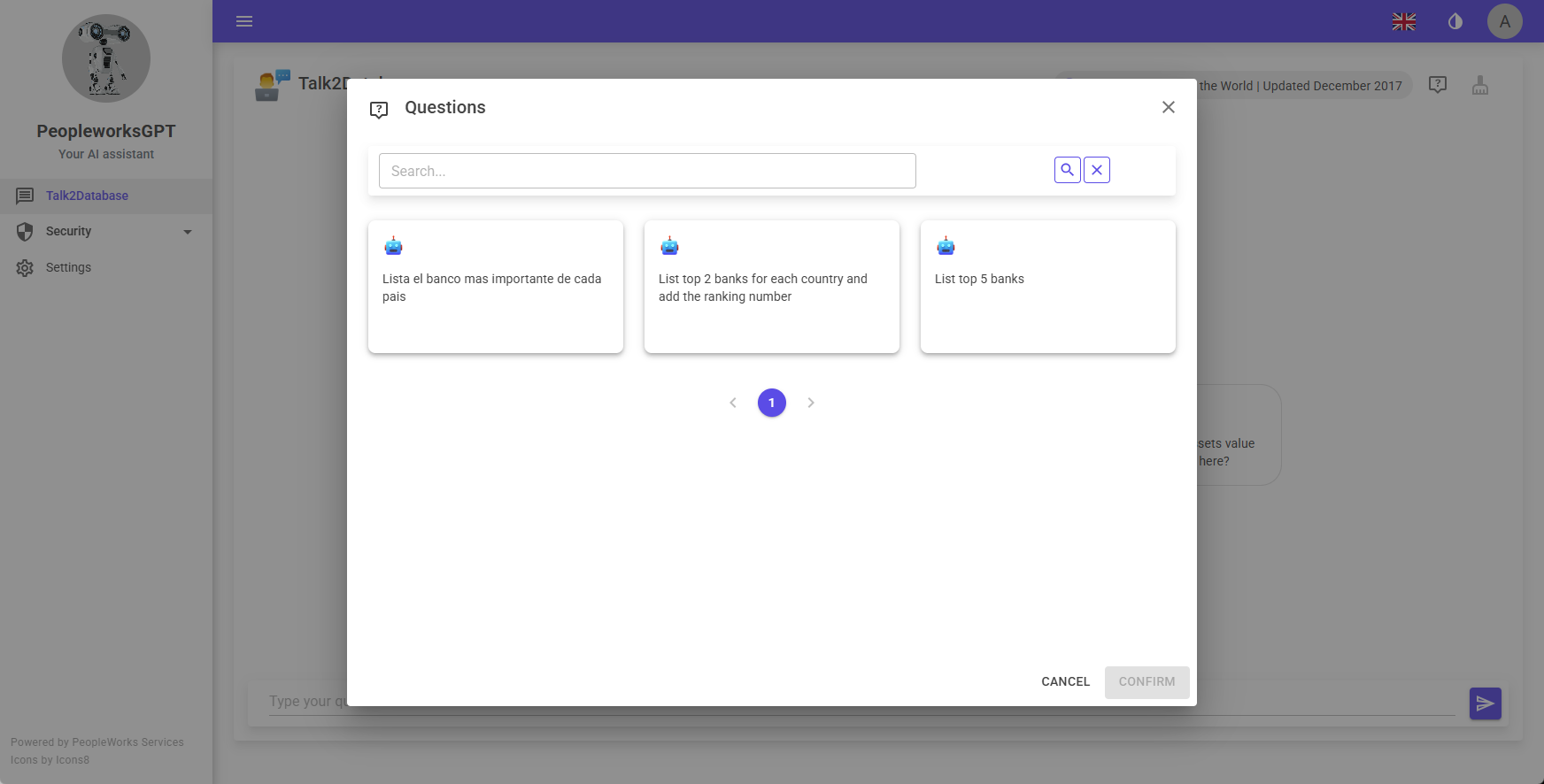
| Explanation Component | What It Reveals | User Benefit | Learning Opportunity |
|---|---|---|---|
| Entity Recognition | Which business concepts the AI identified in your question | Confirm correct interpretation of your intent | Learn how to phrase questions for precise understanding |
| Data Source Selection | Why specific tables and fields were chosen | Understand the logical basis for results | Discover relevant data sources for future questions |
| Filter Application | What criteria were used to narrow results | Verify appropriate scope and boundaries | Learn optimal filtering strategies |
| Enhancement Suggestions | How to improve question for better insights | Get more precise and actionable results | Develop more sophisticated analytical thinking |
🎓 The Learning Partnership
The Explain Prompt feature transforms every interaction into a learning opportunity. Instead of just receiving answers, you gain insight into effective data analysis approaches, learn to ask better questions, and develop a deeper understanding of your data landscape. It's like having a personal data analysis tutor available 24/7.
🔧 The Engineering Challenge: Why Traditional Solutions Fall Short
To understand why PeopleWorks GPT represents such a breakthrough, we need to examine why previous attempts to bridge data and AI have struggled. The challenge isn't just technical - it's architectural, security-focused, and fundamentally about trust.
| Challenge | Traditional Approach | Why It Fails | PeopleWorks GPT Solution |
|---|---|---|---|
| Data Security | Send data to external AI services | Exposes sensitive information, compliance risks | Equation Constructor - data never leaves your environment |
| Query Complexity | Simple template-based queries | Can't handle complex business questions | Multi-step reasoning with semantic understanding |
| Database Diversity | Single database type support | Organizations use multiple database systems | Unified interface for SQL and NoSQL databases |
| User Experience | Technical interfaces requiring training | Limits adoption to technical users | Natural language interface accessible to everyone |
| Transparency | Black-box AI decisions | No visibility into reasoning or validation | Visible query generation and execution path |
🔍 The Transparency Problem
One of the most significant issues with traditional AI-to-data solutions is the lack of transparency. When you ask a question and get an answer, you can't see the reasoning behind it. Did the AI understand your question correctly? Did it query the right tables? Are there any assumptions or limitations in the results?
This opacity creates a trust problem. Business leaders need to understand how conclusions are reached, especially when making important decisions based on data insights. PeopleWorks GPT solves this by showing you exactly what SQL query was generated, which tables were accessed, and how the results were processed.
🏗️ The Perfect Architecture: How PeopleWorks GPT Bridges the Gap
PeopleWorks GPT doesn't just connect data and AI - it creates a revolutionary architecture that transforms how organizations think about data accessibility. Let's explore the key components that make this possible.
🔬 The Equation Constructor Methodology
At the heart of PeopleWorks GPT is a groundbreaking approach we call the "Equation Constructor." Think of it as a mathematical equation where variables are your database elements, and the equation itself is the business logic needed to answer your question.
When you ask a question, the system doesn't send your data to AI models. Instead, it creates an abstract "equation" that represents the solution pattern, then substitutes your actual database variables into that equation. This means your sensitive data never leaves your secure environment.
Semantic Layer Intelligence
The system understands your database structure at a deep level, mapping technical table names to business concepts, understanding relationships between entities, and recognizing data patterns that inform better query generation.
Multi-Model AI Integration
Different AI models excel at different tasks. PeopleWorks GPT leverages the best of each: OpenAI for reasoning, Claude for complex analysis, Gemini for context understanding, and Groq for speed.
Universal Database Support
Whether your data lives in SQL Server, PostgreSQL, MySQL, Oracle, MongoDB, or any other database system, the platform provides a unified interface that speaks the native language of each system.
Intelligent Visualization
The system doesn't just return data - it automatically selects the most appropriate visualization type based on your question and data characteristics, powered by Syncfusion's enterprise-grade components.
🎓 Understanding the Equation Constructor: A Deep Dive
The Equation Constructor methodology is perhaps the most innovative aspect of PeopleWorks GPT. To truly appreciate its power, let's walk through a real-world example step by step.
📝 Real-World Example: Sales Performance Analysis
Let's say you're a sales manager and you ask: "What was our revenue by product category in Q1 compared to last year, and which categories showed the highest growth?"
This seems like a simple question, but it actually requires complex database operations: time-based filtering, category grouping, year-over-year comparisons, and growth calculations. Here's how PeopleWorks GPT handles it:
🚀 The Perfect Harmony: Why This Architecture Works
The magic of PeopleWorks GPT lies in how perfectly its components work together. Each piece of the architecture solves a specific problem while contributing to the overall harmony of the system.
🛡️ Security by Design
Traditional AI solutions create security vulnerabilities by sending data to external services. PeopleWorks GPT inverts this model entirely. The AI processes patterns and structures, while your data remains completely within your control. This isn't just about compliance - it's about fundamental trust in your data infrastructure.
- Data Sovereignty: Your data never leaves your environment
- Transparent Processing: Every query step is visible and auditable
- Compliance Ready: Built-in support for GDPR, HIPAA, SOX requirements
- Enterprise Control: Full governance over AI model usage and data access
🎯 Intelligence by Integration
The system doesn't just use AI - it orchestrates multiple AI models to leverage their individual strengths. This creates a level of intelligence that no single model could achieve alone, while maintaining efficiency and cost-effectiveness.
- Reasoning Models: For complex logical query construction
- Language Models: For natural language understanding
- Specialized Models: For domain-specific optimizations
- Speed Models: For real-time query suggestions
🔄 The Continuous Learning Loop
One of the most powerful aspects of the PeopleWorks GPT architecture is its ability to learn and improve over time without compromising security. The system learns from query patterns, user feedback, and database performance to continuously optimize its equation construction process.
This learning happens entirely within your environment. The AI models improve their understanding of your specific database structure, business terminology, and query patterns, making them more effective over time while maintaining complete data privacy.
🌟 The User Experience Revolution
The technical architecture of PeopleWorks GPT enables something remarkable: a user experience that feels like having a conversation with an expert data analyst who has perfect knowledge of your database and infinite patience to answer your questions.
🗣️ Natural Language as the Universal Interface
The most profound aspect of PeopleWorks GPT is how it transforms data access from a technical skill into a natural conversation. You don't need to learn SQL, understand database schemas, or master complex BI tools. You simply ask questions the way you would ask a colleague.
This isn't just about convenience - it's about democratization. When anyone in your organization can access data insights, you unlock creativity and decision-making potential that was previously constrained by technical barriers.
| User Type | Traditional Experience | PeopleWorks GPT Experience | Impact |
|---|---|---|---|
| CEO/Executive | Request reports, wait days for results | "Show me this month's performance vs. last year" → Instant dashboard | Real-time strategic insights |
| Sales Manager | Export data to Excel, manual analysis | "Which reps are trending toward quota?" → Interactive analysis | Proactive team management |
| Marketing Analyst | Complex SQL queries, data preparation | "Campaign performance by channel and demo" → Instant segmentation | Focus on insights, not mechanics |
| Operations Team | Manual report generation, static dashboards | "Alert me to inventory issues" → Predictive monitoring | Proactive problem solving |
🔮 The Future of Data-AI Collaboration
PeopleWorks GPT represents more than just a technological solution - it's a glimpse into the future of how humans and AI will collaborate around data. The platform demonstrates several key principles that will define the next generation of data analytics tools.
🎭 AI as Partner, Not Replacement
The most successful AI implementations don't replace human intelligence - they amplify it. PeopleWorks GPT exemplifies this principle by handling the technical complexity of data access while leaving the creative thinking, interpretation, and decision-making to humans.
This partnership model creates a powerful dynamic where AI handles what it does best (pattern recognition, query optimization, data retrieval) while humans focus on what they do best (asking the right questions, interpreting context, making decisions).
🌐 The Network Effect of Accessible Data
When data becomes accessible to everyone in an organization, something remarkable happens. People start asking questions they never thought to ask before. They discover connections between different parts of the business. They spot trends and opportunities that were invisible when data was locked away in technical silos.
This creates a network effect where the value of data increases exponentially as more people can access and analyze it. Each new question leads to insights that spark more questions, creating a virtuous cycle of discovery and improvement.
🚀 Try PeopleWorks GPT Today
Experience the future of data-AI collaboration with our live demo:
Launch Demo ApplicationDemo Credentials: GuestAdmin / 1234567 | testUser / 1234567
🎯 The Perfect Bridge: Built and Ready
PeopleWorks GPT isn't just another data tool or AI application - it's the bridge that the industry has been waiting for. It solves the fundamental challenges that have kept data and AI separated: security concerns, technical complexity, trust issues, and user accessibility.
By combining the Equation Constructor methodology, multi-model AI integration, universal database support, and natural language interface, PeopleWorks GPT creates a platform where data and AI work together in perfect harmony. The result is not just better analytics - it's a transformation in how organizations think about data, make decisions, and empower their people.
The bridge between data and AI is no longer a vision for the future. It's here, it's proven, and it's ready to transform your organization's relationship with data.
About PeopleWorks GPT
PeopleWorks GPT is the revolutionary platform that transforms natural language questions into powerful database insights. Built with enterprise security, multi-database support, and advanced AI integration, it democratizes data access while maintaining complete data sovereignty.
Learn more at peopleworksgpt.com or try our demo application to experience the future of data analytics.

Software engineer, passionate about data and information, immersed in a total transformation with artificial intelligence.
